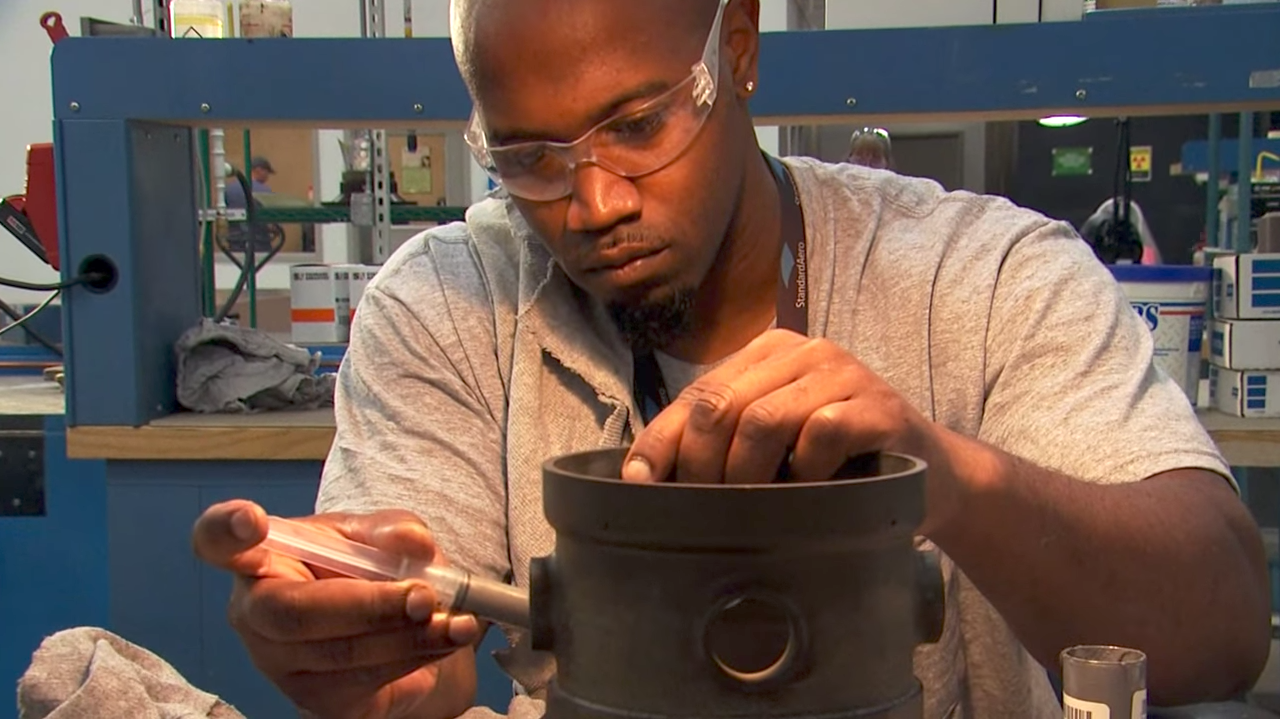
The traffic crash, troubled airline and lessor finances and coming aircraft tear downs are going to dramatically reshape aircraft and engine part markets for years. One aftermarket exec with unique insights into these markets gave an early look at what’s happened so far in a recent audio conference.
Sean Lanagan, president of the EIS Division at CAMP Systems, summarized what CAMP’s ILS platform has been showing about trends in aircraft parts markets during the COVID-19 crisis.
First, interest by part buyers and sellers is down, but not as sharply as one might expect given the collapse in traffic. IFS logins dipped 40% below pre-COVID levels in May, but had recovered to only 23% down by late September. RFQs and quotes have rebounded since early August and were only down 13% by September.
Second, and quite expectedly, part inventory levels have been climbing since early March, more quickly than at any other time in ILS’s history. MRO capabilities offered on ILS were fairly steady until the first of July, indicating that much MRO work continued even after traffic crashed, but then jumped sharply and have remained high through September.
ILS, as a search engine, does not track actual part transaction prices, but does use its massive data on offers to estimate fair market values of parts. Unsurprisingly, Lanagan says 2020 has seen, “unprecedented volatility and changes” in these values.
Fair market values have declined an average of 9% for OEM parts, but only 2% for PMA parts, probably because PMAs were less expensive to begin with. And there has been what Lanagan calls, “a flight to quality.” He says, “Buyers are looking for new and overhauled parts much more, versus removed and serviceable parts.”
Value trends vary greatly by type of part; often the steepest declines are for the most expensive components. For example, one internal drive generator (IDG) was being quoted for $155,000 in July, but dropped to $105,000 in September.
The top-three aircraft for which parts are being searched on ILS are Boeing 737NGs, the Airbus A320 family and 767s, likely for cargo-conversion potential.
The top five parts sought in 2020 have been IDGs, APUs, electronic display units, engine control units, and hydro mechanical units.
Except for APUs, these were the same as the top five last year. “Engine and power parts have increasingly dominated demand on ILS for over three years with minimal shifting in the top spots,” Lanagan says.
Lanagan is seeing increasing popularity of PMA parts for commercial aircraft in recent years, and says that in 2020, “ILS customers stocking PMA parts have communicated that they have recovered quicker than most.” The most popular PMAs have been for Boeing aircraft.
Interestingly, leasing companies, often seen as the major hurdle to PMAs, have been vigorously inquiring about both PMA and used part options in 2020. And airline finance departments have joined purchasing departments as frequent users of ILS. Both trends reflect the intense financial pressures carriers and lessors are under.
On that topic, Craig Fraser, a managing director at Fitch Ratings, commented that the larger stock levels reported by ILS could be used to secure new airline debt issues, which may be needed in coming months. “There are still a lot of unencumbered parts that can be used to raise capital.”
Airlines and lessors have not yet begun to part out aircraft on a massive scale yet, but Lanagan says ILS is seeing more lessors use a special tool that evaluates the potential prices of parts that could be torn down from particular aircraft types. “We are definitely seeing a large uptick from lessors and carriers looking for which parts have the most value and can be quickly liquidated . . . The 777 is quite popular for searching out values.”
GA Telesis CEO Abdol Moabery asked Lanagan whether used parts from the 1,700 aircraft expected to be retired in the next two years might not reduce the popularity of PMAs. “Used serviceable materials are cheapest by far,” Lanagan acknowledged.
It looks like the recent volatility in part values will persist for quite a while.





